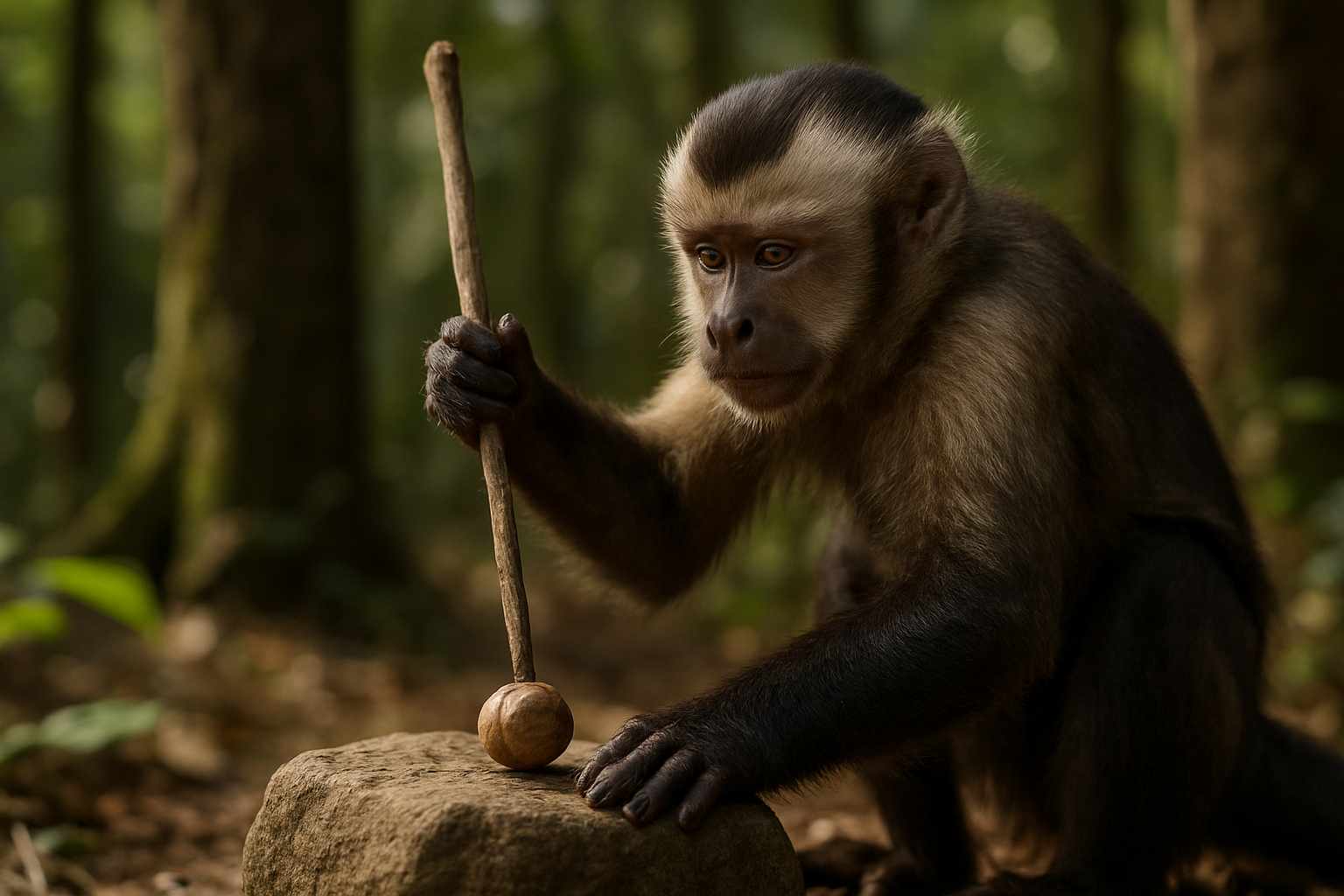Unraveling the Enigma of Capuchin Tool Use
The primate world never ceases to amaze, and capuchin monkeys stand out as some of the most intriguing members. These small, intelligent New World monkeys have captured the attention of researchers and animal enthusiasts alike with their remarkable ability to use tools. From cracking open nuts to fishing for termites, capuchins demonstrate a level of cognitive sophistication that challenges our understanding of animal intelligence.

The Roots of Capuchin Ingenuity
Capuchin tool use isn’t a recent discovery. Observations of these behaviors date back to the early 20th century, but it wasn’t until the 1990s that researchers began to study this phenomenon in depth. The capuchin’s ability to manipulate objects and solve problems is believed to have evolved as an adaptation to their diverse forest habitats, where food resources can be challenging to access.
These monkeys possess several physical attributes that contribute to their tool-using prowess. Their dexterous hands, with opposable thumbs and precise finger control, allow them to manipulate objects with great skill. Additionally, their relatively large brain-to-body size ratio suggests a cognitive capacity that supports complex problem-solving and learning.
A Toolkit Beyond Compare
Capuchins have been documented using an impressive array of tools for various purposes. One of the most well-known examples is their use of stones as hammers to crack open hard-shelled nuts. This behavior requires not only strength but also precision and an understanding of cause and effect.
Beyond nut-cracking, capuchins have been observed using sticks to probe for insects in tree crevices, leaves to scoop up water, and even using certain plants as natural insect repellents. In some populations, individuals have been seen rubbing millipedes on their fur, possibly to ward off mosquitoes, showcasing a sophisticated understanding of their environment and its resources.
Learning and Cultural Transmission
One of the most fascinating aspects of capuchin tool use is how these behaviors are learned and passed down through generations. Young capuchins spend years observing and imitating their elders, gradually perfecting their techniques. This process of social learning has led to the development of distinct ‘cultures’ among different capuchin populations, with specific tool-use traditions varying from group to group.
Researchers have noted that not all capuchin populations exhibit the same tool-use behaviors, even when living in similar environments. This variation suggests that tool use in capuchins is not purely instinctual but involves a significant learned component, highlighting the importance of social transmission in the development of these skills.
Implications for Understanding Animal Intelligence
The sophisticated tool use exhibited by capuchins has profound implications for our understanding of animal intelligence. It challenges the long-held belief that complex tool use was unique to great apes and humans. Capuchins, despite being more distantly related to humans than great apes, demonstrate levels of problem-solving and innovation that were once thought to be beyond their cognitive capabilities.
This realization has led to a reevaluation of intelligence across the animal kingdom. If capuchins are capable of such complex behaviors, what other surprises might be lurking in the cognitive abilities of other species? The study of capuchin tool use has opened up new avenues of research in comparative psychology and animal cognition.
Conservation Concerns and Future Research
As fascinating as capuchin tool use is, it also highlights the importance of preserving these primates and their habitats. Deforestation and habitat fragmentation pose significant threats to capuchin populations across Central and South America. The loss of these habitats could not only lead to the extinction of unique capuchin cultures but also deprive scientists of valuable opportunities to study the evolution of intelligence and tool use in the wild.
Future research in this field is likely to focus on the neural mechanisms underlying tool use in capuchins, as well as comparative studies with other tool-using species. Advanced imaging techniques and field studies using innovative methodologies promise to shed new light on the cognitive processes involved in capuchin problem-solving and innovation.
The study of capuchin tool use continues to challenge our preconceptions about animal intelligence and the uniqueness of human cognitive abilities. As we delve deeper into the minds of these remarkable primates, we’re not just learning about capuchins – we’re gaining invaluable insights into the very nature of intelligence itself. The capuchin’s stone hammer may well be chipping away at our understanding of what it means to be human.





